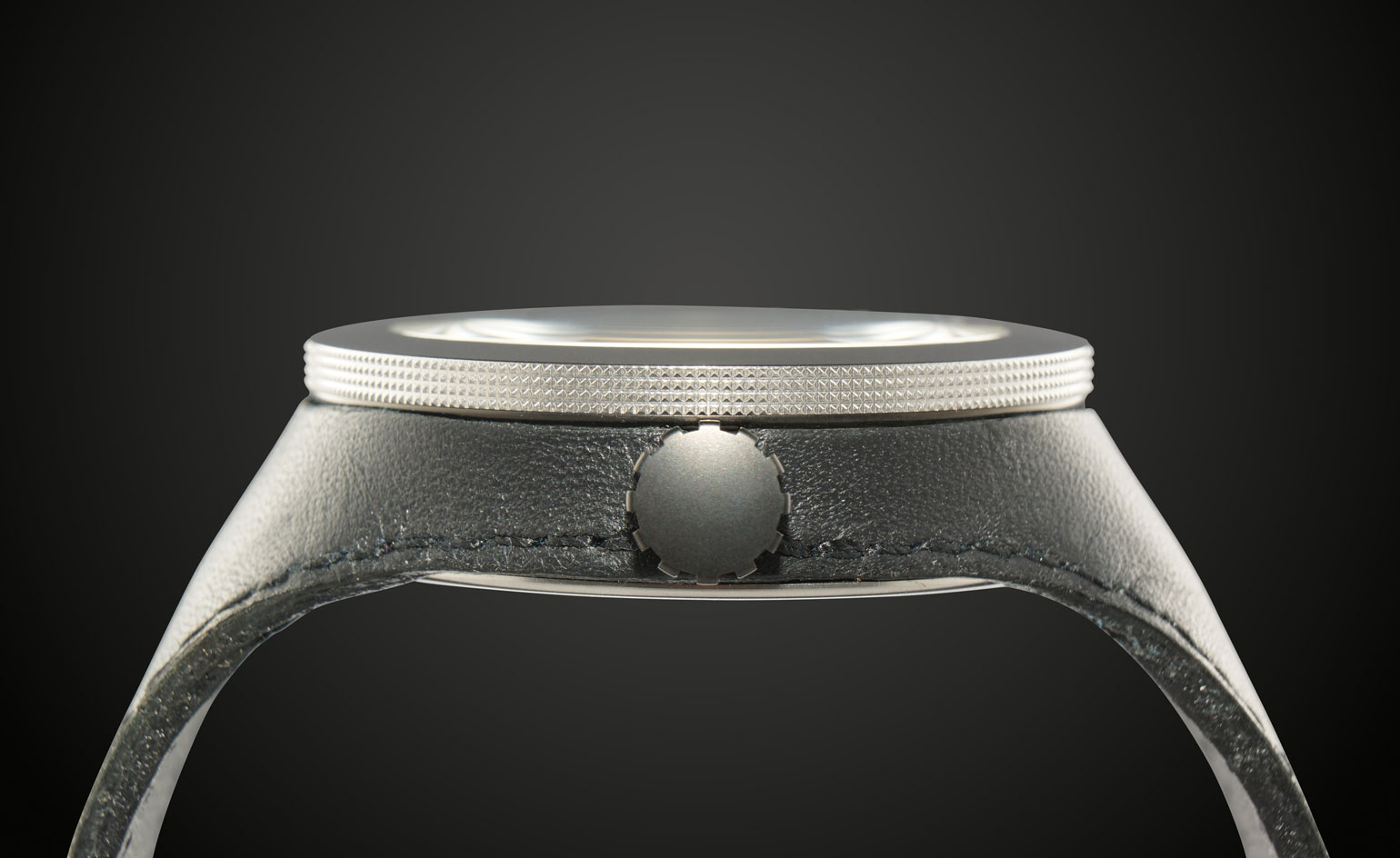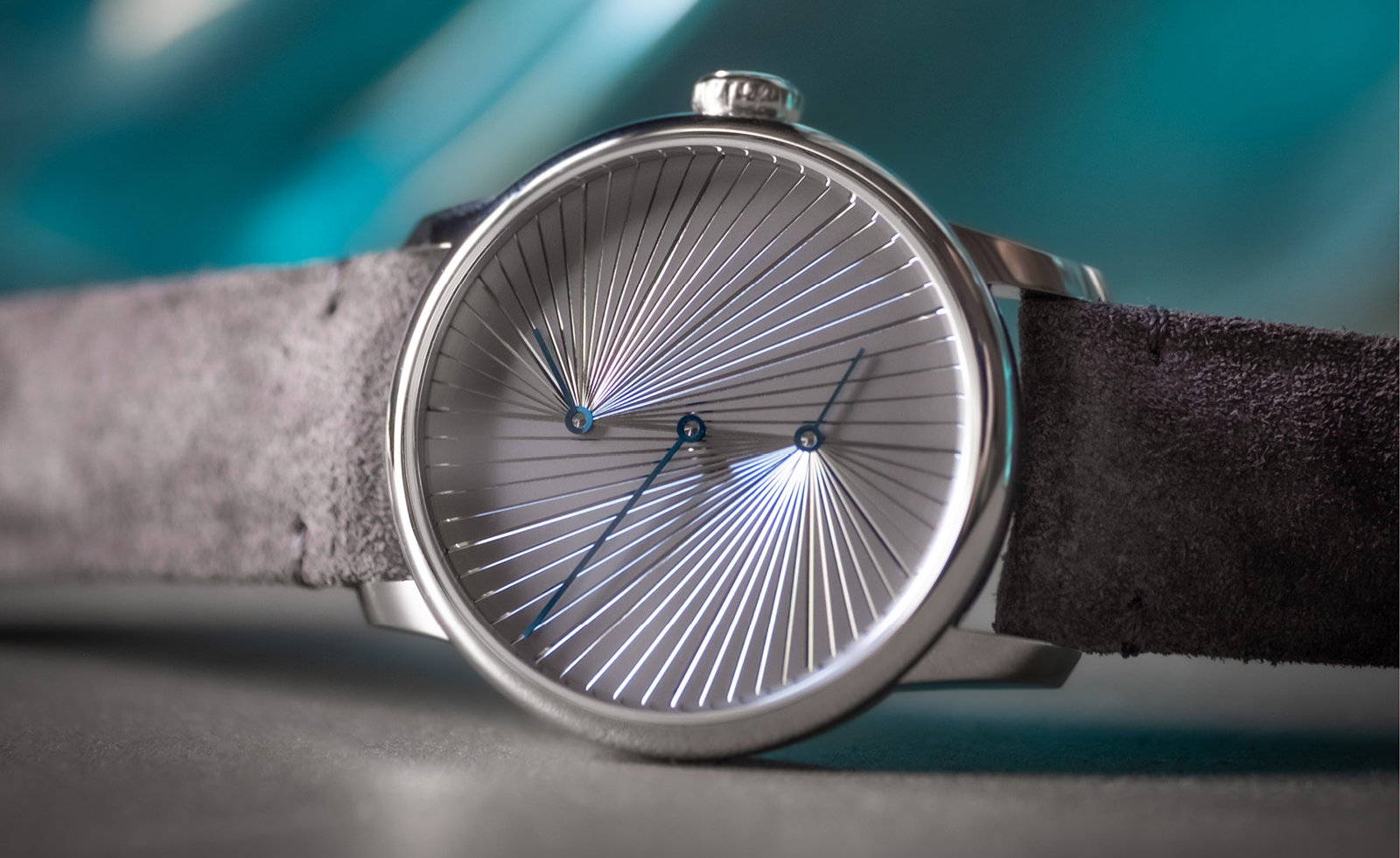
Hannes Bonhoff never set out to launch a watch brand. A doctor of mechanical engineering, he was studying 'vibration isolation in machinery', but had long been intrigued by different ways to display time other beyond the traditional analogue dial. Having patented two watch designs, he has now brought his third - the Bonhoff IP3.0 - to market. With its distinctive leather-covered case and brilliantly graphic dial, it displays time through a series of concentric rings that have to be aligned to give either the hour or the minute. It looks simple but sounds complicated, so we had to track Bonhoff down in Berlin find out more…
Wallpaper*: You've said that your watch makes telling the time a more deliberate act; that the wearer has to think about it more. How does that manifest itself in the dial?
Hannes Bonhoff: How we experience time is actually psychologically very complex and the way we typically show time perhaps too simple - it's effective, but boring. I wanted more interactivity. You have to work a little to get the time on the IP3.0, which maybe makes you appreciate it more. Similarly, I once had a clock that ran counter-clockwise - I liked the fact that you had to think about it.
You are a mechanical engineer - what new design thinking did you apply to the IP3.0?
Well, I know how a technical solution should work but I really struggled with the watch's leather cover. It's cut in 3D, which made it really hard to do the technical drawings - one angle just seemed to transition into another. But then I've never liked lugs on watches much anyway - they always seemed to me to break the flow of the bezel's circle. And I didn't want any to get in the way of operating the bezel either.
The art of making and selling a watch is not just tricky it's almost impossible for a single watchmaker. How did you bring the watch from concept to market?
I was lucky in that the price of my flat in Berlin went up really fast, so I could sell it to finance the development of the watch. Now I have to sell some watches to buy a flat (the IP3.0 retails at €4300). But being self-financed meant there was much less pressure. Initially, for example, it proved impossible to mount the display's five sapphire discs without trapping dust inside, so in the end it had to be done using specialist machinery. I wouldn't have had the time to work out that solution with a bank chasing me…

The Bonhoff IP3.0 displays the time using a series of rings that have to be aligned to reveal the hour or minute

The brilliant, graphic face is complemented by a leather finish

'How we experience time is actually psychologically very complex and the way we typically show time perhaps too simple - it's effective, but boring. I wanted more interactivity,' says Bonhoff

The watch is cut in 3D, which Bonhoff says made it difficult to draw. This layer diagram perhaps best illustrates the concentric rings
Receive our daily digest of inspiration, escapism and design stories from around the world direct to your inbox.
Josh Sims is a journalist contributing to the likes of The Times, Esquire and the BBC. He's the author of many books on style, including Retro Watches (Thames & Hudson).
-
 Curvilinear futurism meets subtropical beaches at Not A Hotel’s ZHA-designed Okinawa retreat
Curvilinear futurism meets subtropical beaches at Not A Hotel’s ZHA-designed Okinawa retreatZaha Hadid Architects has revealed the design for the first property in Not A Hotel’s futuristic new Vertex collection, coming soon to southern Japan
-
 Gorden Wagener leaves the helm of Mercedes-Benz design after 28 years with the company
Gorden Wagener leaves the helm of Mercedes-Benz design after 28 years with the companyThe German designer is stepping down from the role of chief design officer at Mercedes-Benz. We look back at his influence and impact on the world of automotive and luxury design
-
 These Christmas cards sent by 20th-century architects tell their own stories
These Christmas cards sent by 20th-century architects tell their own storiesHandcrafted holiday greetings reveal the personal side of architecture and design legends such as Charles and Ray Eames, Frank Lloyd Wright and Ludwig Mies van der Rohe
-
 Vacheron Constantin unveils the Historiques 222 to mark 45 years since the model’s launch
Vacheron Constantin unveils the Historiques 222 to mark 45 years since the model’s launchVacheron Constantin restates its place in the pantheon of ‘sports chic’ watches
-
 This Timex retro quartz watch is straight from the 1970s
This Timex retro quartz watch is straight from the 1970sThe Q Timex 1972 Reissue watch stays faithful to the design codes of the original
-
 Classic meets cool in Nomos Glashütte’s platinum grey watch design
Classic meets cool in Nomos Glashütte’s platinum grey watch designTwo new Tangente Neomatik watches draw on Nomos Glashütte’s clean German design codes
-
 Girard-Perregaux goes back to the future with rethought Casquette watch
Girard-Perregaux goes back to the future with rethought Casquette watchGirard-Perregaux pays tribute to its original 1970s watch with the new and updated Casquette 2.0
-
 G-Shock marks 40 years of youth culture with limited-edition watch
G-Shock marks 40 years of youth culture with limited-edition watchG-Shock and the Museum of Youth Culture look to the archives for the new GW-M5610MOYC-1ER watch
-
 Ten watch brands mark Mr Porter’s anniversary with special editions
Ten watch brands mark Mr Porter’s anniversary with special editionsTen watch brands, including Cartier, Jaeger-LeCoultre, Vacheron Constantin and Bell & Ross, are celebrating Mr Porter’s tenth anniversary in style
-
 Atelier Oï’s Louis Erard watch is inspired by a minimalist sundial
Atelier Oï’s Louis Erard watch is inspired by a minimalist sundialAtelier Oï has rethought the Louis Erard Le Régulateur watch with a minimalist dial, engraved as if with rays of light
-
 Nomos Autobahn watch is rethought by designer Werner Aisslinger
Nomos Autobahn watch is rethought by designer Werner AisslingerThree new models make up the Nomos Autobahn Director’s Cut Limited Edition watch series, in motoring-inspired hues